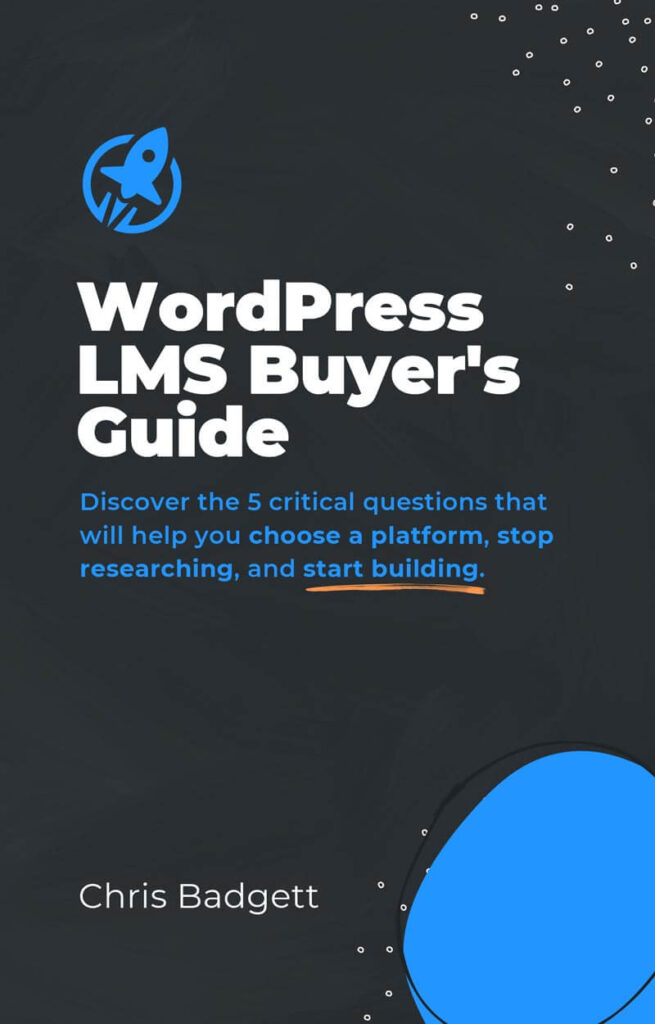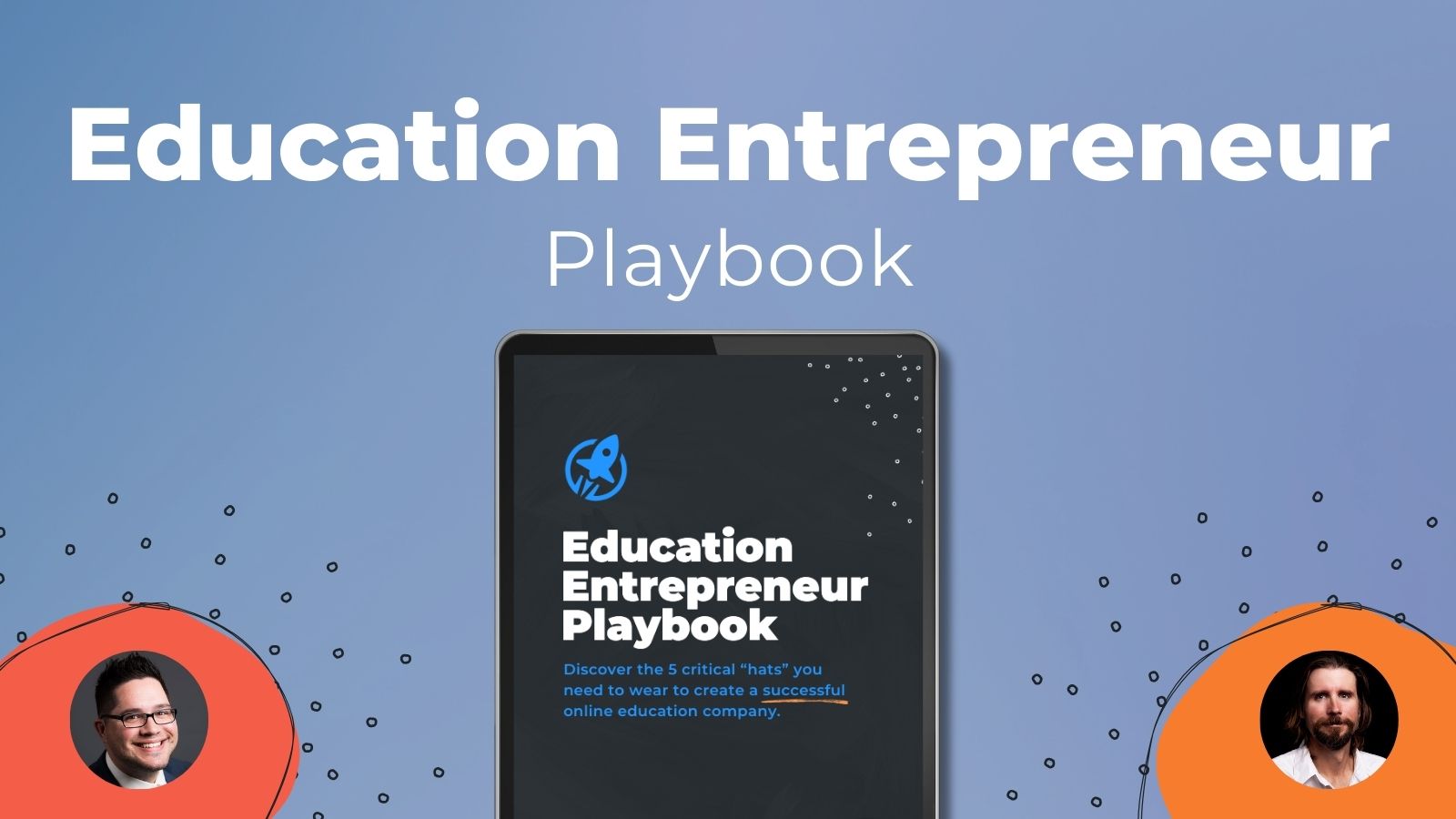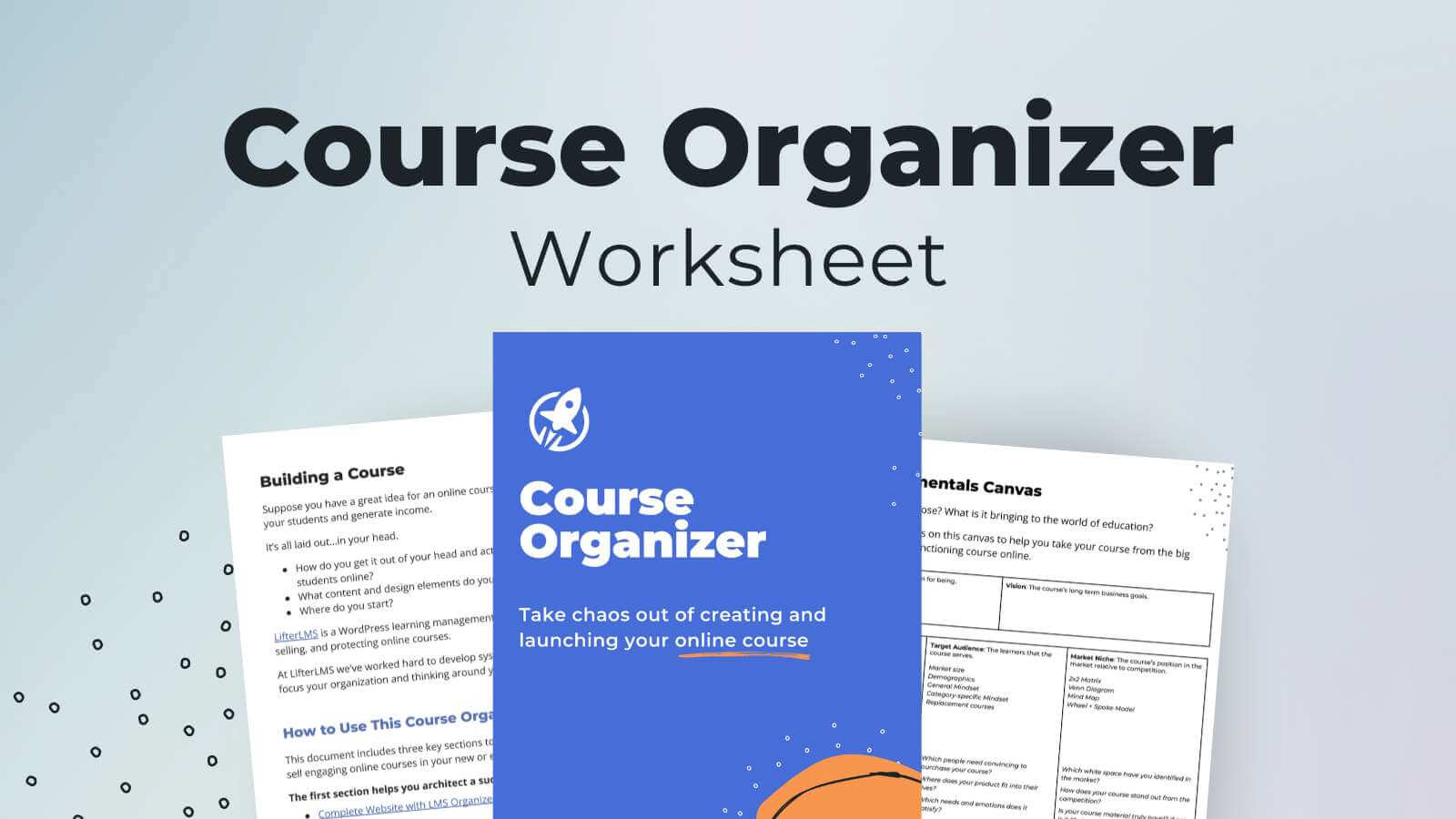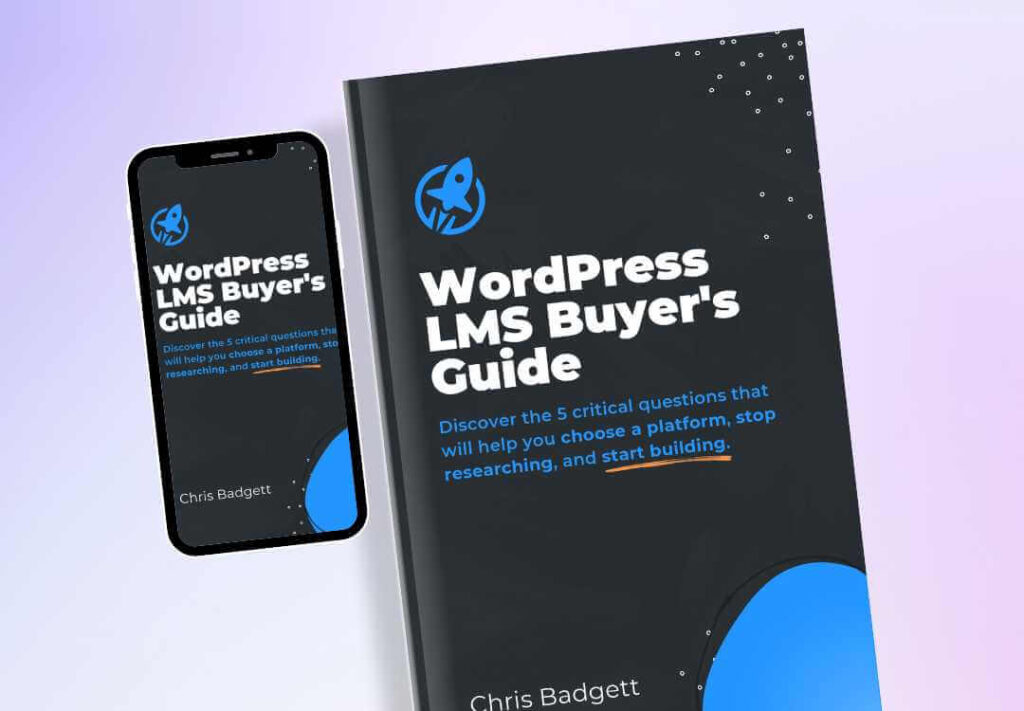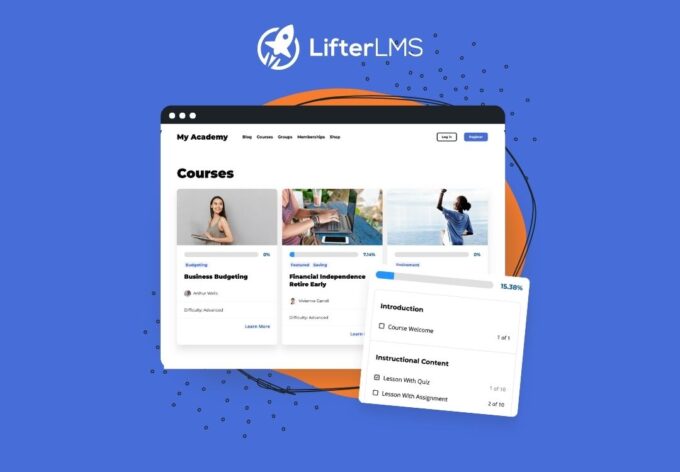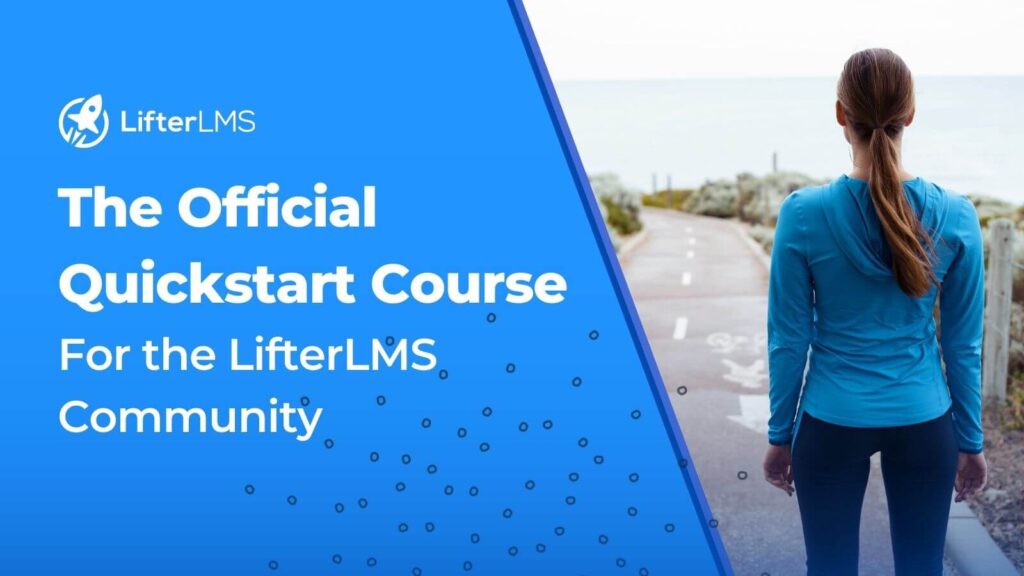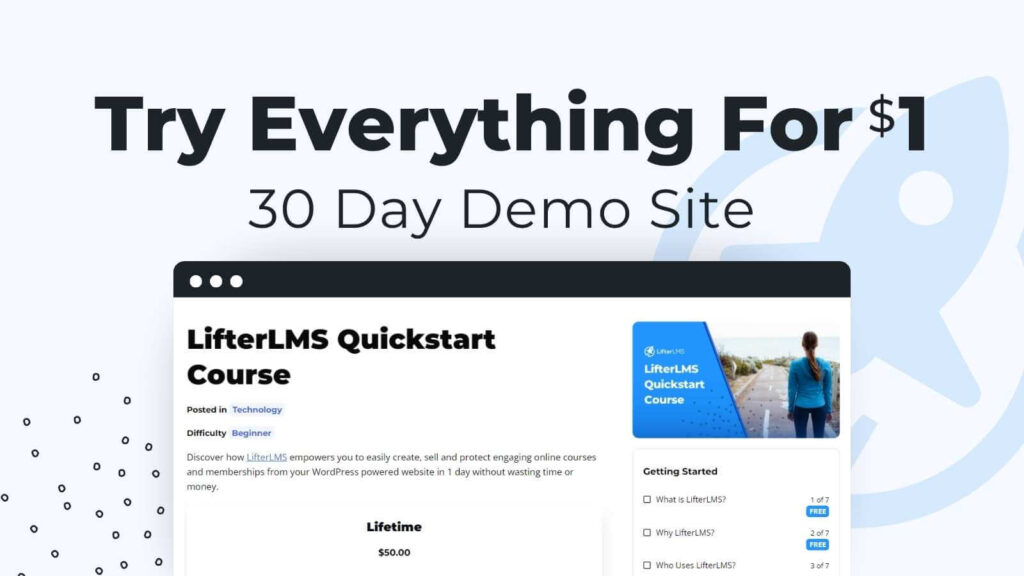This episode is brought to you by Popup Maker
Boost Your Website’s Leads & Sales with Popup Maker
Get started for free or save 15% OFF Popup Maker Premium—the most trusted WordPress popup plugin to grow your email list and increase sales conversions.
James Kemp’s genuineness and depth in this LMSCast episode, which discusses what it truly takes to create and develop a product that serves millions of people, is what makes it so ideal and genuine. In this LMScast, James talks about how he went from working as a web designer at a small business to being the Core Product Manager at WooCommerce. His tone is really accessible and grounded.
He candidly discusses the difficulties, trials, and epiphanies that molded his journey rather than only highlighting his accomplishments. James provides insightful information about how WooCommerce strikes a balance between usability and complexity, particularly for novice and expert users, demonstrating a thorough comprehension of both product design and user experience.
He adds a welcome element of candor by being open about the platform’s present shortcomings and areas for development. James discusses his personal drive to make a significant contribution to the open-source eCommerce industry in addition to the technical aspects.
All of this, together with the organic flow and respect between him and presenter Chris Badgett, makes this LMSCast episode not just educational but also really motivating and real.
Here’s Where To Go Next…
Get the Course Creator Starter Kit to help you (or your client) create, launch, and scale a high-value online learning website.
Also visit the creators of the LMScast podcast over at LifterLMS, the world’s leading most customizable learning management system software for WordPress. Create courses, coaching programs, online schools, and more with LifterLMS.
Browse more recent episodes of the LMScast podcast here or explore the entire back catalog since 2014.
And be sure to subscribe to get new podcast episodes delivered to your inbox every week.
2025 WordPress LMS Buyer’s Guide
Exclusive Download! Stop wasting time and money researching online course and membership site tech.
Episode Transcript
Chris Badgett: You’ve come to the right place if you’re looking to create, launch, and scale a high value online training program. I’m your guide, Chris Badget. I’m the co-founder of lifter LMS, the most powerful learning management system for WordPress. State of the end, I’ve got something special for you. Enjoy the show.
Hello, and welcome back to another episode of LMS Cast. I’m joined by a special guest and friend. His name is James Kemp. He’s the core product manager at WooCommerce. I’ve known James for a long time. He has an awesome Twitter. You can find him at James C. Kemp on Twitter or X. But first, welcome to the show, James.
James Kemp: Yeah, thanks Chris. Good to be here finally.
Chris Badgett: Yeah. Awesome, man. It’s, we’re gonna have an exciting conversation around WooCommerce and just your life and what you do with Woo. But first tell us about [00:01:00] your role at WooCommerce. What do you do there?
James Kemp: Yeah, like you said core products manager and that’s yeah I wanna say a fairly new role, but it is a new role at WooCommerce.
Prior to that, I was a product manager. I. At WooCommerce and the difference there is that a product manager focuses on specific they tend to have specific focus areas. So my focus area prior to being core product manager was order management. So I would focus on products that enhance or features improvements that kind of enhanced the order management experience.
Whereas now the core product manager role is working alongside all of the other product managers and creating a more cohesive vision of every aspect of WooCommerce and. Joining the dots between the different teams within [00:02:00] WooCommerce and what each each product manager and each subsequent engineering team and design team are working on, but also connecting the users and, the merchants, the builders and their experience and what they’re expecting from WooCommerce on the whole, yeah, and I’m also I’m helping out a little bit with some platform stuff. So we separated between product and platform. And product is essentially the experience that either a merchant or a user or a customer on a WooCommerce store would have. And platform is more like behind the scenes kind of stuff.
Like performance and things like that. I’m helping it a little bit with platform at the moment as well, just because the person who usually leads that is on sabbatical. So yeah, that’s that’s me at the moment.
Chris Badgett: Very cool. And similar to Lifter LMS, which has a free core [00:03:00] plugin.
WooCommerce has a free core plugin and then tons of extensions. Do you have any sense of how many add-ons for WooCommerce exists? It’s thousands, I’m guessing. But
James Kemp: yeah, I would say thousands. I did have the number on our marketplace. So WooCommerce has a marketplace typically, or Yeah in the past.
Primarily that is for premium extension. So it’s a marketplace where you buy a product to enhance WooCommerce. They also had they would list SaaS, software as a service based products as well in the marketplace. And I think they’re looking at listing free products now as well, which will be interesting.
But yeah, I believe on the marketplace and I have this number somewhere, but I did not bring it with me. There’s thousands on that marketplace alone. Then not all, WooCommerce extensions are in that marketplace. So yeah, there’s definitely a big collection of extensions available
Chris Badgett: Going back to Core, I know from the LMS space, it sounds easy, like in the beginning it’s like for the user, they just wanna put some of course together, put some videos in it, sell access to it. But over time what happens is people start asking for more and more. And I know the same is true in e-commerce.
The beginner user, in their mind, they’re just like, I just wanna be able to sell a product for my website, which on the surface sounds pretty. Straightforward in the sense that okay, there’s a product and we can take billing, and then they’re either gonna get it mailed to them or it’s a digital product, but it’s not that simple.
And there’s a lot of complexity that grows over decades. But you still wanna protect the user, particularly a first time user or beginning beginner user, or in your case store owner to be able to get in there and get started without getting overwhelmed. So how do you think about complexity [00:05:00] but also protecting the beginner user?
James Kemp: Yeah, I think this has always been the biggest challenge, like you say, and I think WooCommerce’s approach previously has always been to be quite a lean core offering. And I think that is still the case, but over time. What merchants expect from a lean offering has changed. That there’s things that merchants and even builders expect now that maybe they wouldn’t have five years ago.
So yeah there’s definitely like an evolution that happens. And my view is to still keep the core as lean as possible. But we want to make sure that what we are offering are the essential tools that, the majority of merchants or builders would require in order to get started with [00:06:00] e-commerce.
Chris Badgett: WooCommerce has always been, or at least in recent years positioned against Shopify as like a software as a service solution. In some ways, software as a service solutions can be a little easier to get started in, but they’ve become much more limited in flexibility, customizability, they often get a lot more expensive over time.
But as an insider inside of WooCommerce, how do you think about Shopify versus WooCommerce?
James Kemp: I think everyone has different views on this. One of my views is. That they’re serving for slightly different user types. I agree with what you’re saying, that it appears easier to create or to launch a very simple store on a software on a software as a service, products like Shopify because you can just.
[00:07:00] There’s no decisions to make. You can just go to the website, create a login, create an account, and your store is active. Whereas with something like WooCommerce, you’ve got to think a bit more where am I gonna host this? How much is it gonna cost me? And that cost differs depending on where you has it.
So there’s definitely like a barrier to entry there. But I do feel like. And you touched on it with, as you progressed down the line, you realized that a platform like WooCommerce is a lot more flexible and extensible than something like Shopify, which is much more strict and rigid in the add-ons and customizability that you can put into it.
And I think many of the people. Who come into WooCommerce are looking for that flexibility out of the box which makes the whole decision process of, where am I gonna host this a bit more palatable to them, I think. But yeah if you had someone highly non-technical wanting to spin up a store, then.
WooCommerce is a hard sell for them at the moment. And that is something that we’re trying to improve. And that’s not an improvement at the products level. That’s an improvement at the marketing level. We need to build a better path into just spinning up a WooCommerce store and then having them be able to take that and set it live and use it.
But we’re also trying to like, cater that experience to any host and, any preference of where you want to host this thing. So it’s a challenge for sure, but like I say I think they’re slightly different user types. And maybe they shouldn’t be and maybe they won’t be, further down the line once we, enhance the path into WooCommerce. I think there’s definitely there’s scope there to improve that process.
Chris Badgett: I’m looking at WooCommerce on the WordPress repository, the free core plugin, and it has over 8 million active installations. So tell us about your story. How did you go from a guy who found WordPress to building WooCommerce add-ons to core product manager at Woo responsible in, in a way for eight, 8 million plus users?
Tell us about that journey.
James Kemp: Yeah, there’s an interesting stat actually. We update what we call the newsroom every month typically which is woocommerce.com/newsroom. It gives some statistics about WooCommerce and where we stand in the grand scheme of the internet. And currently and we we make conservative adjustments to the numbers that we get.
The statistic right now is that 33% of all e-commerce stores are powered by WooCommerce. Which is a huge [00:10:00] number. And it ties into my story a little bit, which yeah if you aren’t aware, which I’m sure many people aren’t. I started with WordPress back in 2009 when I was working at a web design agency.
WordPress was their tool of choice for. Actually, when I started we were just using HTML not even PHP, just HTML. Then, yes, PHP started making its way into our workflow and we’d have, like dynamic copyright dates in the footer and template parts for headers that we could carry across different pages.
And then WordPress made its way into that. Process as well for content management. I think it was used a little bit for specific sites that maybe required a bit more. And we were using Magento at the time as well for e-commerce. WooCommerce wasn’t I always forget when it was first launched, [00:11:00] but it was around that time, but it wasn’t, a big thing yet.
Jigo shop was still a thing back then. Which WooCommerce was a fork of. So yeah, we were using WordPress and Magento and I have always, so I started my role as a designer what they called a web designer, which was someone that would design and then build the website. So it was a mix of design and development.
And I’ve always been keen to experiment and just build things. So one of the things I built at that time was a plugin that for WordPress, that integrated Magento elements into your WordPress site. So we could bring in like the Magento cart and put it in the WordPress header and carry, that cart session across the whole site.
I built that as a free plugin released it on.org as a free plugin. And then I built some add-ons for that [00:12:00] as premium plugins. They were things like single sign-on and some other things that I can’t recall right now. And I sold them on Code Canyon, which is a, an Invato product.
Invato have like. Different marketplaces for different types of products. And code Kenyon was their software or, code code snippet marketplace. They had not just WordPress related products that you could buy there, you could buy scripts for PHP and things like that.
So yeah, I put those products on there and at some point we shifted over to. Using WooCommerce. And I had left this company by then and started my own web design. I call it an agency. It was only two of us building websites for clients and we started using WordPress and WooCommerce, and this was like 2011.
And just in that. Interaction with [00:13:00] clients, they would ask for features that weren’t available in WooCommerce. And my proposal to them would be I can build this for you for a lower price if you allow me the license to then sell this as a product. So my first WooCommerce product was called multiple images per variation for WooCommerce.
So it was quite a practical tongue twister name. Eventually renamed as woo thumbs and is still selling today. But that’s where my, love for selling software and selling products. Started over the course of the next. Seven to eight years I built up a collection of WooCommerce specific plugins eventually rebranded from selling under my own name to selling under iconic wp which is still the brand name today, iconic wp.com.
And yeah I built that up [00:14:00] into a business that, provided. My full-time job, provided income for myself and my family. But also we hired, we had three developers. We had a support team that we outsourced to level up. We had a designer, we had a content person, so we had a. A business essentially selling WooCommerce plugins until 2021 where that business was acquired by Liquid Web Stellar wp which is where it still resides now.
And then I worked there for a couple of years, still running iconic and doing the same stuff that I was doing prior to the acquisition, but with. A bit more backing from Stellar and that the interactions you can then get from other product based companies. And then I got to a point where felt like I’d done as much as I could for iconic, and, the majority of our products [00:15:00] were like utility based.
Not solution based. They were enhancements to WooCommerce. And I wanted to be able to take my knowledge of WooCommerce and my kind of understanding of design, of development, of marketing, of product, and place it somewhere where I could have more impact. So I reached out to Paul, who was the CEO of WooCommerce at the time.
I just said, is there any job for me that would satisfy those needs to put my skills to a products that would impact more people? And then, yeah we went through the process and here I am. Like I say, that kind of ties back to that 33% figure that now I can that what I’m doing feels more impactful.
Feels like it’s, it’s valuable to that number of [00:16:00] people. And that’s a big responsibility. But, a satisfying feeling when it goes right.
Chris Badgett: That’s awesome. How do you keep your cool just with 33% of e-commerce, impacted by your decisions? I feel the same way on a much smaller scale in the LMS niche.
There’s a lot of people who depend on the software, but I guess I’ve just gotten used to it, so it doesn’t bother me. But does that, do you ever feel that pressure of all the people out there
James Kemp: just, yeah, I mean there’s definitely, pressure. I think the way I counteract that is previously I think WooCommerce would develop features, develop things in WooCommerce, and they would release it and people would find out about that stuff as it was released.
I think one of the things that I’ve tried to bring to the table since, since being in my [00:17:00] role, is to be a bit more open with the community, with the users, with the merchants and the builders about what we’re working on, and get feedback, right at the beginning of the process rather than, and then using that as a tool to make a decision rather than just making a decision.
Assuming that, I know best or the team knows best and then dealing with the consequences. I feel like it’s counteractive a lot more because I’ve validated those decisions before they’re actually rolled out or implemented. And that’s not to say that, we won’t get things wrong sometimes, but I think being where I am now, I have the ability to, ensure that if a decision is made incorrectly, that we’re able to reverse that or remedy it in some way rather than this is out there now and deal with it. That’s not the kind of approach that I like to take especially with, with the user base that we have. [00:18:00]
Chris Badgett: It doesn’t surprise me.
But great product people use their, use, the products that they work on. So you’re also an awesome photographer. I bought one of your grease prints for my mom for Christmas.
James Kemp: Yeah. How did she like it?
Chris Badgett: Yeah. Yeah. She loved it. It’s up and its up in the house. But you have your photography site, which is at James Kemp photo, and then you did a physical product.
I think their wooden puzzle site called puzzles unlocked.com. Tell us about those pet projects.
James Kemp: Yeah, I think, and I touched on this earlier actually which is quite nice that I have a desire to just be creative and build, and I think that comes through in, just doing photography in general but also wanting to build things in code and wanting to solve puzzles.
Like all of these kind of tie into that creative aspect would [00:19:00] just having that outlet to be creative in some way. So one of the things I wanted to do that I hadn’t really done before was to actually use WooCommerce as a merchant. I. Previously I had used WooCommerce as a builder building stores for other merchants.
So I understood the needs that they had in terms of what they needed from the product, but I didn’t have the understanding of how they would experience WooCommerce as a merchant, with the day-to-day, like managing orders and shipping stuff and, taking payments and.
Dealing with refunds and things like that. So yeah I wanted to dog food it, which is what they call that process of using your own product. And the first experiment with that was the photo site. So I set that up with a essentially a drop shipper. It’s a UK [00:20:00] based printing. Place that they do framing as well.
So they’ve got quite a good selection of services that suited it quite well. And also the print quality that, that they produce is really good. So yeah, I set that up as a little demo a little trial of, using WooCommerce as a merchant figuring out. And approaching like the product of WooCommerce from a different mindset.
So that was quite nice. But then I wanted to experience what it would be like to have a WooCommerce store that is shipping physical products and is not essentially a print on demand. Like the other one say, yeah, I set up a puzzle store. Puzzles unlocked.com, which like you say, sells not jigsaw type puzzles, but puzzles that are more like escape room in a box type puzzles.
And that was quite a different experience that required. And this isn’t necessarily like a difference in, [00:21:00] in WooCommerce. But more like setting up a business like that. Because it required some upfront funds. I had to buy the product and store the product and sell it. Buy it at cost and sell it at profit.
And also deal with shipping, which I didn’t have to deal with on the photo site. Yeah, it’s been interesting to. To try that. And I think in both cases the biggest stumbling block for me is marketing and, just not having traffic to the site. So you can, and this would be the case on any platform, right?
You can set up a store, but if no one’s there, then you’re not gonna sell anything. And I feel like that’s something that. That we try and help with, but I think there’s things we could do there that, that could improve visibility through like partnerships with, TikTok and Google Ads and like all these different kind of marketing channels.
But [00:22:00] again, that kind of stuff requires money. And not every. A person setting up a store has money. They just want somewhere to sell stuff. And maybe they already have an audience and they can, publicize it that way. But yeah, that, that was a, that was the biggest challenge for me.
I think.
Chris Badgett: That’s awesome. Woo is so flexible. You mentioned a print on demand store, physical product store. We use WooCommerce. Been using it for over 12 years to sell Lifter LMS, like a digital software product on a subscription. You could sell event tickets. I do some running and I’ve played around with minimalist shoes and I know the Zero shoes guy sells his shoes with, from a WooCommerce store.
Is that Patrick? I’m trying to remember his name. I can see his face in my mind. He is really good at marketing, by the way. Yeah. But it is so flexible. Tell us about just like all the different options you can do [00:23:00] from physical products, print on demand, event tickets, whatever courses like Lifter has a course product, a membership product that integrates with WooCommerce, so does paid memberships pro, like it’s just.
It’s huge. Like you can sell anything with WooCommerce. I haven’t seen anything you couldn’t sell, but I think it was originally designed for selling t-shirts, if I’m not mistaken. But
James Kemp: yeah, I think you touched on it there, that it’s flexible enough to sell anything. And the beauty of the ecosystem of WooCommerce and WordPress in general.
Is that most of the things that you could think about and, the methods of selling have already been thought about and there’s already like a solution somewhere that you can either just use straight out of the box or build on top of. And I think, that’s one of the best things about WooCommerce is just how flexible it is and something that, I particularly like to think about when we’re [00:24:00]discussing new features, like how could a third party extend this particular thing that we’re building? Because I think that’s why WooCommerce is as successful as it is because it is that flexible. But yeah to answer your question, I think it could sell just about anything which is, very powerful.
Chris Badgett: During the pandemic there was like online restaurant ordering, like that’s a whole other niche. That’s huge. There’s so many. I think WordPress, one of its strengths is the international aspect of it. Multi-language. And Shopify is from Canada and I think I would, I’m guessing, but I would say the majority of their users are in North America.
Or Europe maybe, but WordPress is everywhere. And one of the strengths of WooCommerce, different countries have different like payment gateway situations and laws and tax issues and all these things. And WooCommerce is right there with solutions for all that around the world.
James Kemp: Yeah, [00:25:00] exactly.
And I think that’s also one of the challenges, right? Because we have solutions for. A lot of these things in Germany they have very specific e-commerce regulations and the things that we need to think about, like at what point should that be a core feature to support merchants in Germany or merchants in Australia or China, or, wherever they are.
And that’s a tricky challenge like. Like you say, payment methods is, one thing that not everywhere accepts the same type of payment method. Majority of these different places, and even down to the individual will host in different, they’ll host the website in a different place and they’ll have different regulations about security and things like that.
So it’s a it’s a blessing and a challenge. Like how flexible it is. But I think one of the key things is, and I touched on this [00:26:00] earlier as well, we, we wanna have the essentials for the majority of users. And then anything else should be, we should have the ability to extend it, to meet the needs of those specific you know, environments or locations.
Chris Badgett: As a product manager, creative person, visionary where do you see artificial intelligence interacting with the WooCommerce project or for merchants and store owners? Like how, where are we going with AI and e-commerce and how will, or how could Woo be a part of that story?
James Kemp: Yeah. It’s a tricky one with WooCommerce because.
AI costs money and WooCommerce is inherently free. The core of WooCommerce is a free offering. So rolling AI based things into core is [00:27:00] not really viable because someone has to absorb that cost. What I do see as an offering is. More like hosted solutions that interact with WooCommerce.
And I think specifically, and this ties back to like my challenge when creating a store I think that AI can act as an assistant with knowledge of your store and the specifics of what you’re trying to sell and give you, proactive advice. So you’re not, you don’t need to go to the AI and say how can I do X, Y, and Z?
It would come to you and say, if you change this, you’ll convert X percent more people. Or, if you update these meta things you’ll boost your traffic by X percent. And I think that’s like a valuable, way that AI could be used alongside, the typical things that you might expect, like enhancing product descriptions and editing photos and [00:28:00] interacting with an AI to, carry out store admin tasks for you.
I, I think the proactive insight side of things would be one of the most valuable things. But yeah, like I said, I it is not something that we could put into court because there’s a cost to it that, you know and we have thought about how we could do that. And yeah, it’s there’s ways but yeah, I it needs exploration.
Chris Badgett: Yeah. The proactive, WooCommerce assistant would be amazing. I think about, I use a. Reporting SaaS integration with our WooCommerce store called Merick. I really love it and core WooCommerce reporting has improved a ton over the years. But all that data is just sitting in there that I know in ai particularly if it could, if it’s not just looking at my data but has like a language model or whatever of all. Yeah. Like of many stores or whatever, and it’s oh, I think the [00:29:00] easiest like magic wand thing to think about is something like pricing. So Yeah, exactly. Based on this pricing and based on what’s happening in your store, cross reference across millions of other sites.
I think you should charge this much or raise this price, lower this price, do this price localization thing. By the way, do you want me to set that up for you and install the plugin and just handle all that for you? That’s a dream scenario.
James Kemp: Yeah, that would be awesome. I think one of the challenges as well as all the other challenges I mentioned is just having people share that kind of data.
Chris Badgett: Yeah.
James Kemp: Sensitive data. Yeah. Because yeah, when it becomes e-commerce data, it does become, sensitive. But also sharing that data does benefit them as well, because they’ll be able to get the same insights. But yeah I think that’s a challenge and a hurdle that would need to be overcome in order for something like that to be successful.
Because like you say [00:30:00] I think the value of that is in the AI knowing. Based on data, what works. And that requires data.
Chris Badgett: Yeah. I think the part too on that is a conversion rate optimization assistant. So hey, maybe you should put a testimonial here by the button or whatever. Or this thing’s broken on your side or based on the like.
Hotjar user interactions and stuff, like there’s a blind spot over here and all this stuff. Yeah.
James Kemp: Yeah. I think there’s tons of cool stuff that you can do, and I think as well, like AI is advancing so quickly. Yeah. That I think there’s use cases that we haven’t even considered yet.
Chris Badgett: Yeah. In five years, it’ll, who knows what we’re gonna be doing and if it, the tools just get exponentially more powerful.
James Kemp: The other thing and it’s not something that we would do, but the, AI assisted coding [00:31:00] has made it a lot easier for people to create their own solutions to a specific problem that they have. You can get AI now to spin up a plugin to do something. And it will pretty much work out of the box.
So I expect to see that improve over time. I think code quality and like code security will become more essential in the output on those types of things. But yeah, I think that’s. It’s quite a different landscape now than from when I started, which is interesting.
Chris Badgett: Yeah. Last question for you, James.
Like, how do you think about the future of Blue, like the vision for it, because it’s an established product, it’s used by 33% of e-commerce, like where to go from here besides ai? What else? How do you think about the future?
James Kemp: Yeah, I think I. Again, we’ve led in, in our conversation here to my answer.
I [00:32:00] think WooCommerce outta the box needs to offer the essentials and that’s gonna evolve over time as different things become more essential. I think. There’s a modernization that needs to happen with WooCommerce and is happening. We rolled out our new brand recently which will, align us a bit more with being able to market the product more effectively and like having this brand message that, that we can put forward.
And just really knowing who we’re targeting there, whereas I think. The previous brand other than the colors hadn’t evolved much from when it was originally created, and I think it was quite a developer heavy like branding that we had previously. So yeah, I think there’s modernization that needs to happen and the making sure that the core product offers the majority of, offers the essential tools to the [00:33:00] majority of users. Also, performance is something that we’re massively focused on at the moment. Just making sure that every part of the product is performing and product quality is something that we’re, keeping in mind for anything that we put into WooCommerce, how.
How how does it affect the experience for different types of users? And is it, does it have what they need? Is it fun to use? Is it good to use? All that kind of stuff. So yeah, I think that’s like the short term focus. And that’s the 2025 focus. And I think what we will see as time goes on is how can we offer more advanced tools to, to WooCommerce users potentially like outside of WooCommerce.
So that we have more capabilities to. Offer functionality in a consistent way. One of the challenges that we have with WooCommerce as a product is making it work consistently across all the different environments that you can host it in. So I think offloading some of that to a controlled environment.
If, if the user wants that is a good way to do it. Yeah and I think that, aligns well with being able to offer things like ai and, have have that kind of data model behind ai based things as well.
Chris Badgett: I just wanna highlight something you touched on earlier that helping store owners sell and do marketing basically, and sales.
I think about that a lot at Lifter LMS and customers literally ask for it all the time. I’m like, cool. I built it. Now how do I sell it? Or how do I market it? And I’ve helped users like develop, kind of ad funnel pages that lead into a sales call and things like that. But in my mind, I’m thinking, and I, you would probably agree that it’s not part of [00:35:00] WooCommerce core.
We have coupons, right? But that’s if you open up marketing and WooCommerce, there’s coupons and that’s it, right? But there’s there’s a lot of other ways to do marketing and I think that’s not necessarily part of the WooCommerce core. It really depends on what the product is and what the niche is and what the personality of the store owner is.
But helping merchants sell, not like actually sell, not just open a store is like a greenfield opportunity for add-on developers, service providers and stuff that could really do something.
James Kemp: I think it’s a challenge because. Typically like marketing costs money. Yeah. I do think there’s, SEO is still a big thing and I think there’s an era of ai, SEO that these AI tools that people use are recommending products and services and [00:36:00] people are using, AI instead of Google to.
Determine, what kind of product they want to buy. So I think what we can do as a product, as a platform is to make sure that we have rich schema like the meta that you need on product pages and things out of the box. And as much. As much of that information and data for things like Google and AI tools available out of the box with, little to no setup required.
I think that’s the kind of stuff that we can help with. And hopefully that will see some improvements. But yeah, I think marketing is tricky because it costs money. You even need to have an audience. You need to know where your audience is or you have to pay to, capture the audience via, Google ads or Facebook ads or TikTok ads and all that kind of stuff.
And I think a lot of merchants like me particularly, didn’t [00:37:00] really have funds to, to put in straight away. I wanted to launch a store and. Make some money and then put that money back into marketing and things like that. So yeah the challenge is once you’ve launched your store, what’s next?
Chris Badgett: Yeah, I agree. I think there’s a big opportunity with TikTok. I. Like having your feed go into TikTok, just like the WooCommerce Facebook plugin would put your products into your Facebook business page or whatever. Yeah,
James Kemp: that’s, and I guess the question is like, should those type of integrations be something that comes in core?
I would say probably not in core. Just, yeah. That’s the. Ties back into different people requiring different things. Like not everyone’s gonna require specifically a TikTok integration. But what we should be able to do is let them know that [00:38:00] exists. Yeah. And make it easy to install separately.
Which I think is another part of. How we could improve the core offering. So we’re not necessarily adding the feature to core, but we’re saying like this is a one click install type thing. You don’t need to go finding it. Yeah,
Chris Badgett: stuff. That’s James Kemp. He’s the core product manager at WooCommerce.
You can find him on Twitter at Ja. James C. Kemp. Thanks for coming on the show, James. I always enjoy our conversations. I could nerd out about e-commerce and woo and WordPress forever. Thanks for doing that with me for an hour. Really appreciate it. Any other final words for the people?
James Kemp: Just if you have any questions about WooCommerce or suggestions or just want to be heard, want to be directed to the right place, then you know, feel free to reach out to me on Twitter slash x.
And I will do my best to accommodate. Thanks for coming on, James. [00:39:00] Yeah, thank you.
Chris Badgett: And that’s a wrap for this episode of LMS Cast. Did you enjoy that episode? Tell your friends and be sure to subscribe so you don’t miss the next episode. And I’ve got a gift for you [email protected] slash gift. Go to lifter lms.com/gift. Keep learning. Keep taking action, and I’ll see you. In the next episode.
2025 WordPress LMS Buyer’s Guide
Exclusive Download! Stop wasting time and money researching online course and membership site tech.


